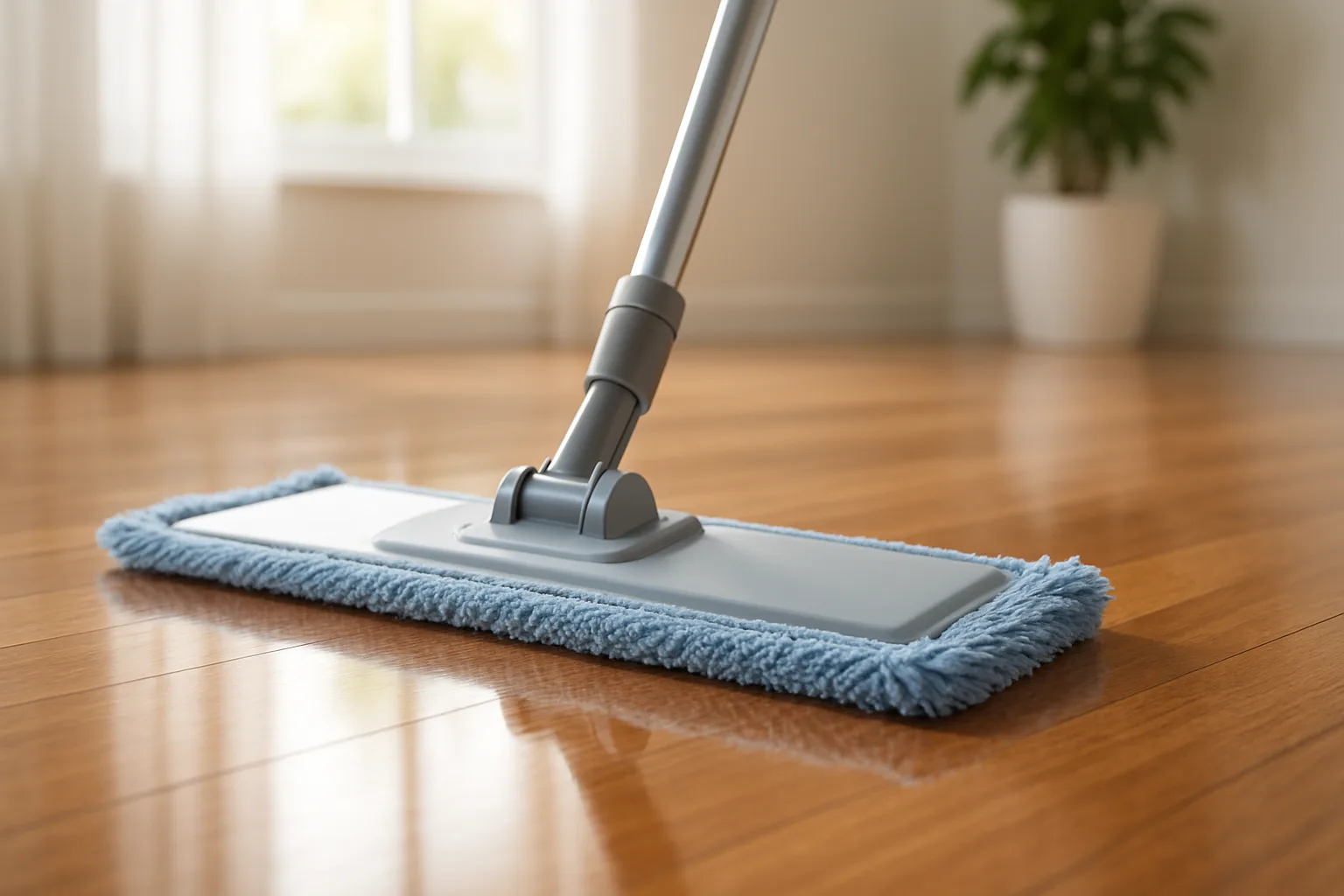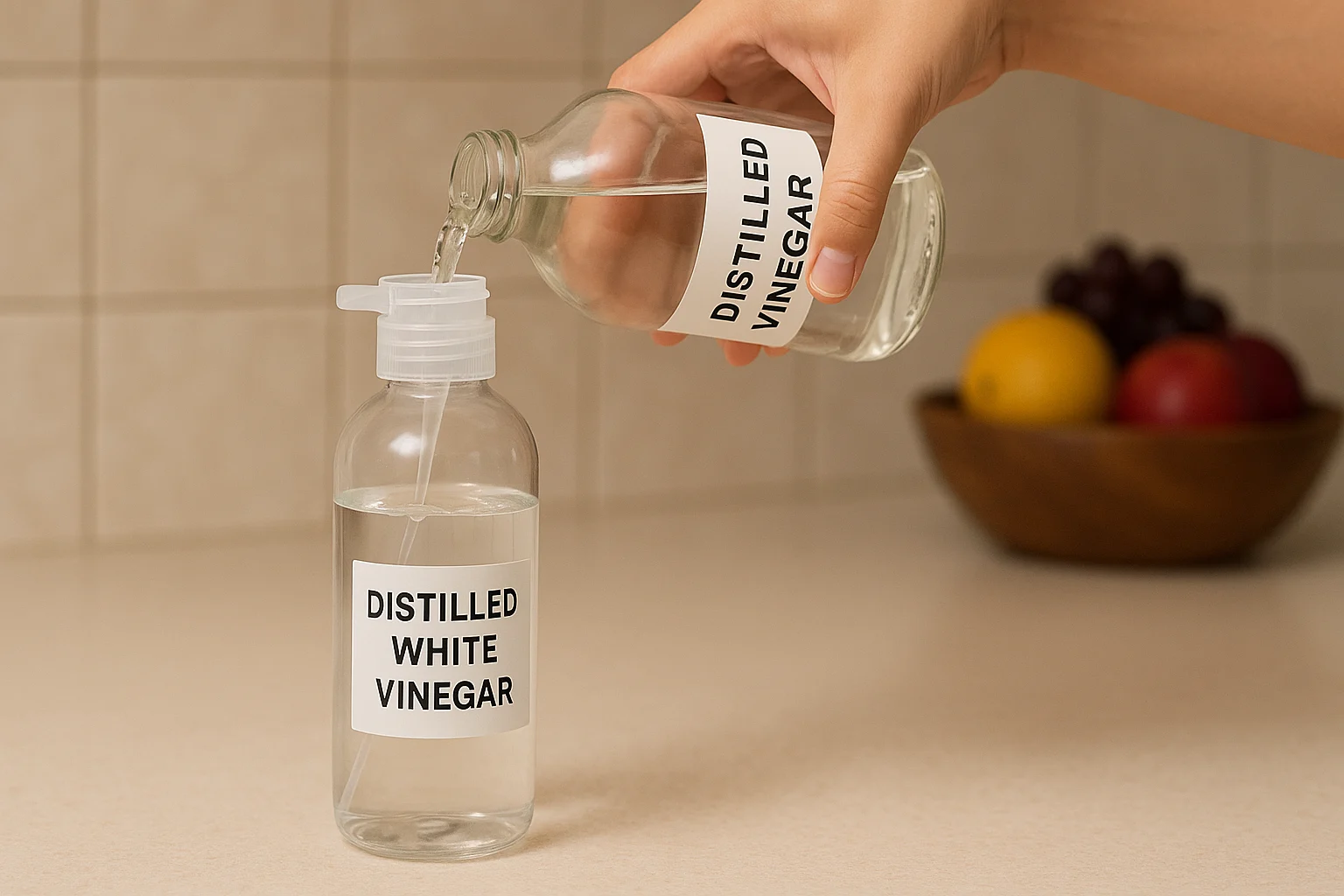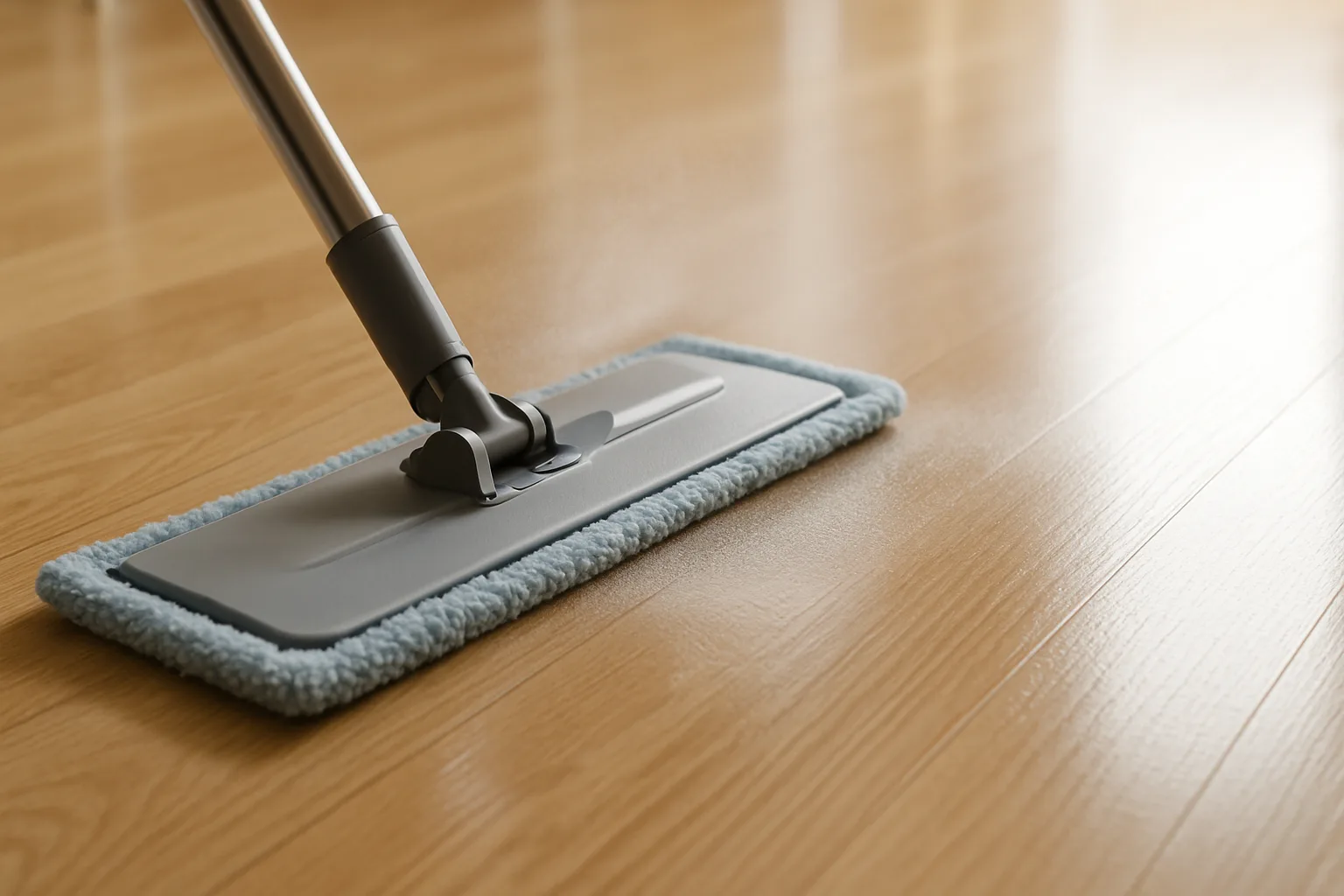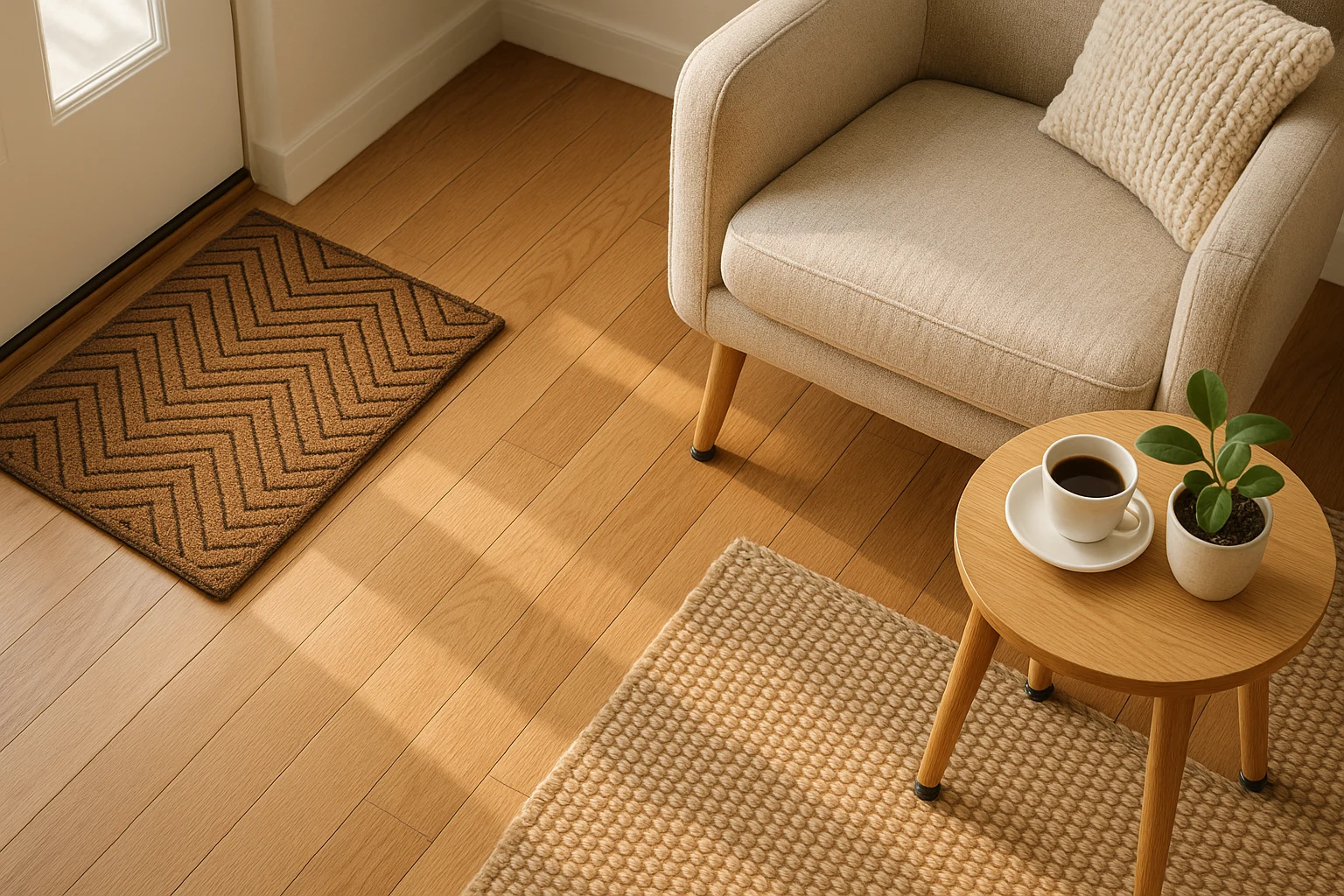
Tired of $15 bottles that leave a film and a headache? This 2-ingredient homemade cleaning solution for hardwood floors delivers a streak-free clean with fewer smells—on the cheap. It’s part of our broader approach in homemade cleaning solutions, where we break down safe, eco-friendly swaps for every surface. Below is the exact recipe, when to use it, and how to avoid finish damage.
Check Your Floor Type Now!Table of Contents
- Why Choose a DIY Hardwood Floor Cleaner?
- Know Your Hardwood Floor Finish First
- 2-Ingredient Recipe (Homemade)
- How to Clean Hardwood Floors (Step-by-Step)
- Tips for Long-Lasting Hardwood Floor Care
- When to Avoid This Homemade Cleaning Solution
- FAQs About Homemade Cleaning Solutions
- Conclusion & Next Steps
Why Choose a Homemade Cleaning Solution for Hardwood Floors?
Before I switched to natural cleaners, I kept grabbing whatever was on sale—and my floors still looked dull and a bit sticky. I was burning about $15 a month on bottles that didn’t help. A simple two-ingredient routine (plus a few smart habits from our guide to frugal cleaning hacks) made the difference. Here’s what won me over:
- Cost Savings: Those bottles run $10–$20 each; my homemade hardwood floor cleaner costs pennies. Over a year, that’s more than $100 back in my pocket.
- Safe Ingredients: Distilled white vinegar can cut everyday grime, but many brands advise against acidic cleaners on wood. If you’d rather buy than DIY, choose a pH-neutral cleaner, ideally certified by the EPA’s Safer Choice program.
- No Residue: When used sparingly and dried promptly, this solution often flashes off without a sticky film—only where your manufacturer allows acidic cleaners.
- Eco-Friendly: By using a natural cleaner, I’ve cut down on plastic waste and chemical runoff. I also rinse and reuse my spray bottles instead of buying new ones.
- Customizable: I add a few drops of lemon or lavender essential oils for a light, fresh scent without artificial fragrances.

Know Your Hardwood Floor Finish First
Before you spray anything, figure out what finish you’re working with. Poly floors can handle a light, quick wipe; waxed or oil finishes can’t. If you don’t know, check the paperwork from your install or search your brand + “care guide.” Once you’ve got the finish, pick the routine that matches. Here are the common types:
Sealed Hardwood (Polyurethane, Polyacrylic)
Most newer floors are sealed—water should bead up instead of soaking in. On polyurethane, a very weak, lightly acidic mix is sometimes allowed. Still, brands differ: do a quick spot test, keep passes light, and don’t leave moisture sitting.
Waxed Hardwood
Older floors with a wax finish can soak up moisture. Skip vinegar here—it can strip the wax and leave the surface dull.
Oil-Finished Hardwood
These have a natural, matte look. Vinegar can dry the finish, so stick with cleaners made for oil-finished wood.
Unsealed Hardwood
Unfinished wood drinks up water fast, which can warp boards. Avoid liquid cleaners altogether.
Laminate or Engineered Wood
These mimic hardwood and are usually sealed. This natural hardwood cleaner may work, but always check your brand’s care guide first—many manufacturers prefer neutral-pH formulas over acids.
Brand Guidance & pH-Neutral Options
When in doubt, use a pH-neutral wood floor cleaner recommended by your brand or a product that meets the EPA Safer Choice product standard. For general maintenance advice, the National Wood Flooring Association provides homeowner care guidance.
Tip: Test your homemade cleaning solution in a hidden area first!
Check Your Floor for Homemade Cleaning Solution Safety 🌟
Select your floor type to ensure this cleaner is safe!
This post contains affiliate links. If you buy through our links, we may earn a commission at no extra cost to you. Learn more.
2-Ingredient DIY Floor Cleaner Recipe
Ready to mix it up? This pantry-friendly DIY floor cleaner is quick, cheap, and it works. Want another wallet-friendly idea? Try my homemade upholstery cleaner.
Materials You’ll Need
You’ll need:
- Distilled White Vinegar: Its acetic acid cuts everyday grime on some sealed finishes.
- Distilled Water: Prevents mineral streaks, unlike tap water.
- Optional Essential Oils: 5–10 drops of lemon or lavender for a light, fresh scent.
- Spray Bottle: For even application.
DIY Floor Cleaner: Recipe Instructions
If your manufacturer allows mild acidic cleaners on sealed hardwood, mix about ½ cup distilled white vinegar per 1 gallon of distilled water (≈1:32). Combine in a spray bottle, add optional oils, and shake gently. For sticky spots on sealed areas, you can try up to ~1:10 on a cloth only—spot-test first, then wipe with clean water and dry. If your care guide says to avoid vinegar, skip this recipe and use a pH-neutral hardwood cleaner instead.
If your care guide says “no vinegar” or “no acids,” stick with a pH-neutral cleaner designed for your finish.

How to Clean Hardwood Floors with a DIY Floor Cleaner
Here’s how to get a clean, streak-free finish:
Step 1: Prep the Floor
Move light furniture if you can, then sweep or vacuum to pull up grit that can scratch. Use your vacuum’s hard-floor setting.
Step 2: Apply the Cleaner
Work in small sections (about 4×4 ft). Lightly mist the surface—no puddles. Less liquid is safer for wood.
Step 3: Mop with Microfiber
Microfiber lifts grit without scratching. I reach for the Bona Hardwood Floor Spray Mop because it’s light and easy to steer. Work in gentle, overlapping rows and change pads the moment they look gray. After you’re done, wash the pads and let them dry completely.
Step 4: Dry Right Away
Finish by drying right away. If you see a damp patch, buff it with a clean microfiber cloth so the sheen stays even.

Tips for Long-Lasting Hardwood Floor Care
Pair this homemade hardwood floor cleaner with a few everyday habits to keep the finish looking good—even with pets. For extra savings, check out these budget-friendly pet care tips:
- Test First: Try your homemade cleaning solution in a hidden corner first and check the finish in good light before doing the whole room.
- Use Less Moisture: Avoid oversaturation to prevent warping or damage.
- Avoid Steam Mops: Heat can penetrate finishes and harm wood.
- Clean Spills Quickly: Wipe spills immediately to avoid stains.
- Use Doormats: Trap dirt at entryways to reduce wear.
- Add Furniture Pads: Felt pads prevent scratches from furniture.
- Seasonal Maintenance: In humid seasons, use a dehumidifier to prevent wood swelling. In dry seasons, a humidifier helps avoid cracks.
- Pet Care: Trim pet nails regularly to minimize scratches, especially in high-traffic areas.
I noticed my floors looked dull in winter until I got a humidifier. That small change kept them shining!
When to Avoid This Homemade Cleaning Solution
For safety, do NOT use this natural hardwood cleaner on:
- Waxed Floors: Vinegar can strip wax, leaving floors vulnerable.
- Oil-Finished Floors: It may dry out natural oils, dulling the finish.
- Unsealed Floors: Liquids cause warping and staining.
- Floors with Restrictions: Always check manufacturer guidelines.
- Manufacturer “no acid” guidance: If your brand says to avoid vinegar or acidic cleaners, don’t use this mix.
FAQs About Homemade Cleaning Solutions
Transform Your Floors Today! ✨
With this simple DIY floor cleaner, you’ll save money, avoid harsher chemicals, and enjoy sparkling results. Your home will shine with minimal effort—just follow your brand’s care guide so the finish stays happy. Happy cleaning!
Want more eco-friendly cleaning ideas? Check out our comprehensive guide on homemade cleaning solutions for budget-friendly recipes and tips.